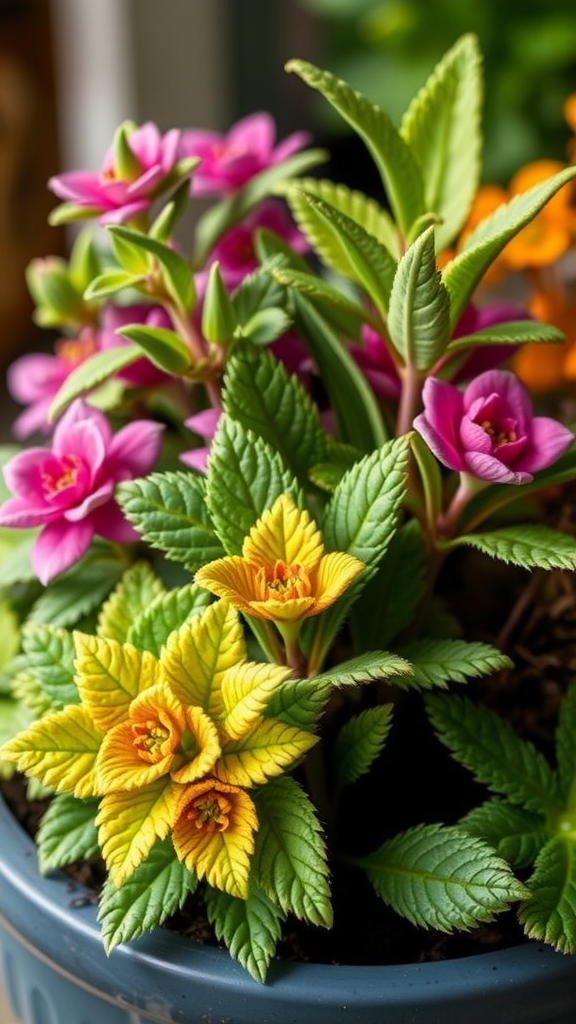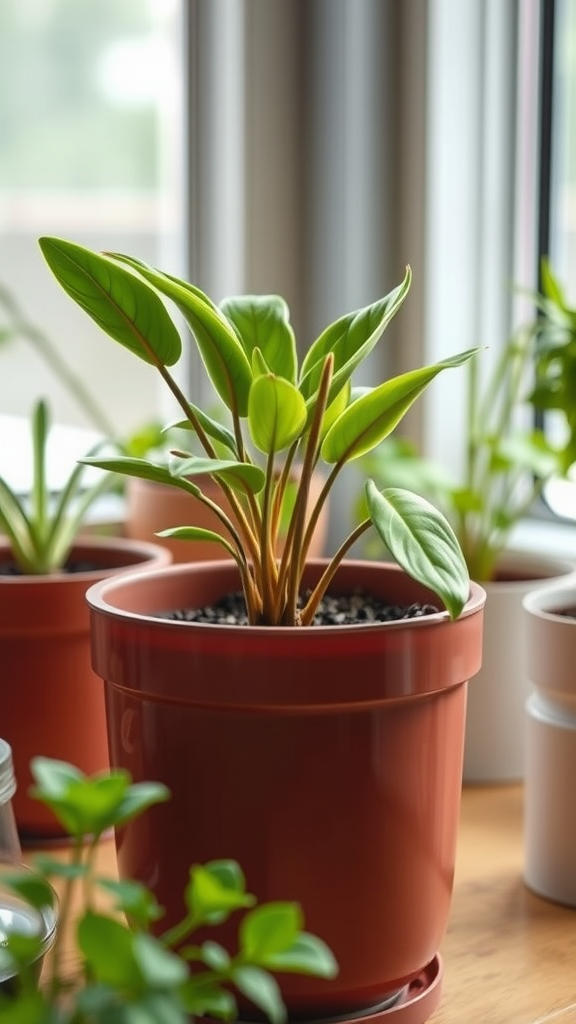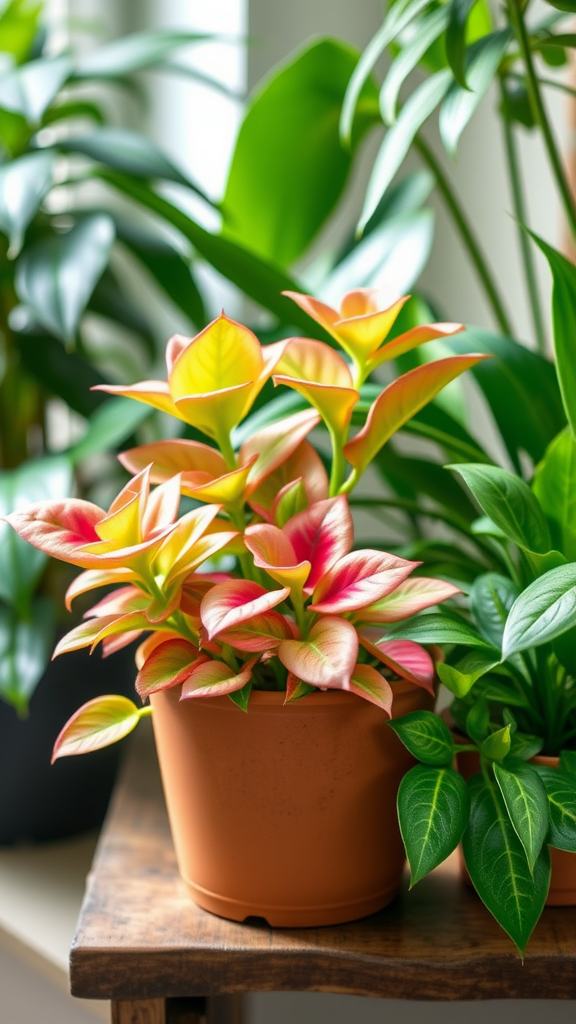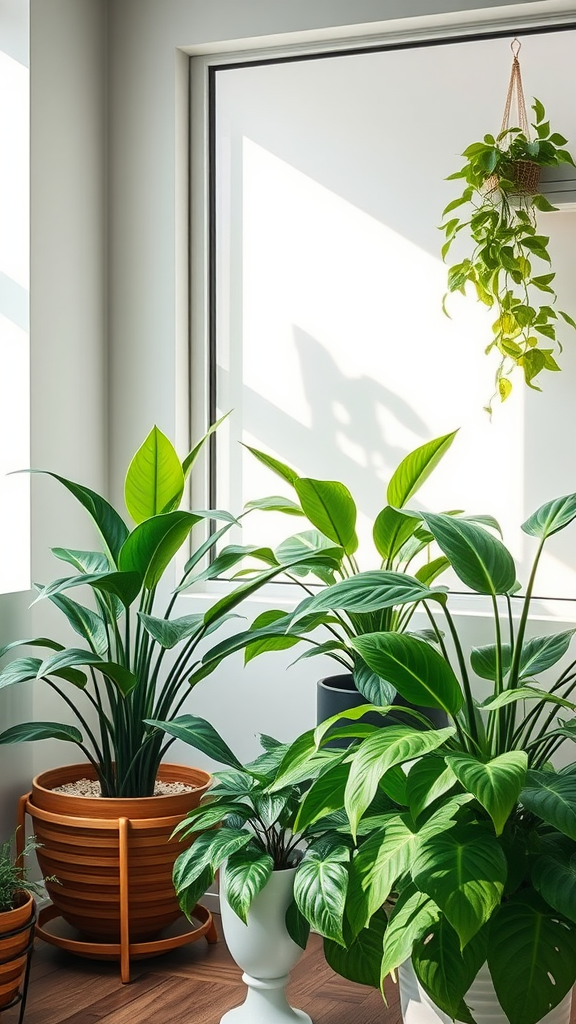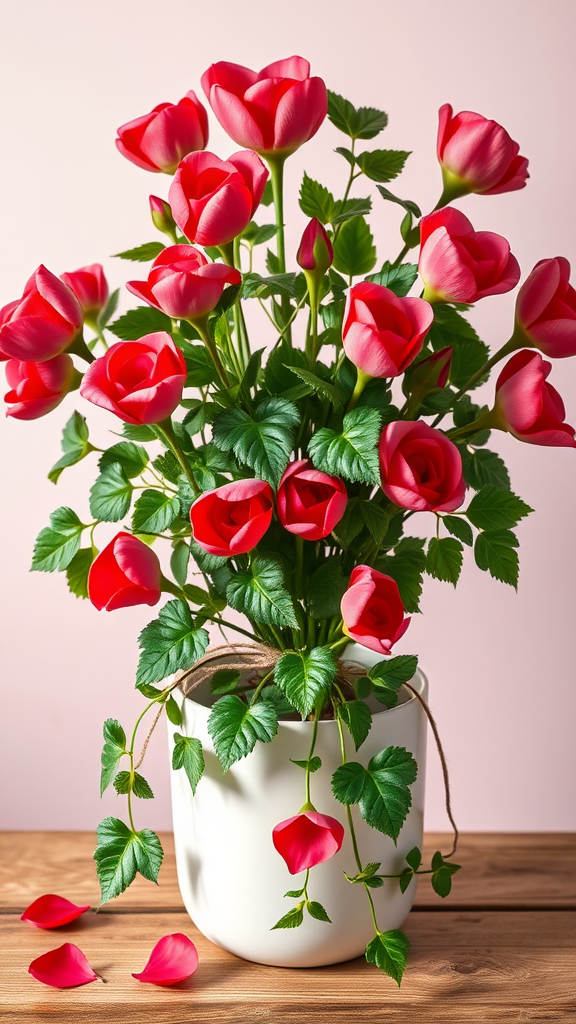Top 10 Plants for Beginners: Easy-to-Grow Picks
If you’re looking to start your journey into the world of plants, choosing the right ones can make all the difference. With so many options available, it can be overwhelming, especially for beginners. This guide will help you navigate through some of the best plants that are easy to grow, requiring minimal care while bringing joy to your space.
1. Spider Plant
The Spider Plant is a popular choice for beginners due to its resilience and ability to thrive in various conditions. They prefer indirect sunlight and can tolerate minor neglect in watering. Not only do they purify the air, but they also produce “pups” that can be easily propagated.
2. Pothos
Pothos is another excellent plant for those new to gardening. It’s adaptable and forgiving, making it perfect for different environments. You can place it in low light, and it only requires watering when the top inch of soil is dry. Plus, its trailing vines add a lovely touch to any room.
3. Snake Plant
The Snake Plant, or Sansevieria, is known for its striking leaves and ease of care. It thrives in low light and doesn’t need frequent watering—just ensure the soil dries out between waterings. This hardy plant is also great for improving indoor air quality.
4. ZZ Plant
If you’re a beginner who often travels or forgets to water plants, the ZZ Plant will be your best friend. This plant can survive low light and can go weeks without water. Its glossy leaves make it a beautiful addition to any home.
5. Peace Lily
A Peace Lily is not just easy to care for; it’s also known for its beautiful white flowers. It flourishes in low light but prefers to be kept moist. Just remember to wipe its leaves occasionally to keep them clean and allow the plant to breathe better.
6. pothos marble queen
Pothos Marble Queen is similar to the regular Pothos but features striking white and green variegated leaves. Easy to grow and care for, this plant thrives in bright, indirect sunlight and only needs watering when the soil is dry. It’s also a great air purifier, making it a lovely addition to homes.
7. Aloe Vera
Aloe Vera is not only a beautiful succulent but also offers health benefits. It’s incredibly low maintenance, requiring bright sunlight and occasional watering. Plus, you can use the gel from its leaves for soothing minor burns and skin irritations.
8. Rubber Plant
The Rubber Plant can grow quite tall, making it an impressive indoor tree. It prefers a spot with bright, indirect light and should be watered when the top inch of soil is dry. Its dark green leaves will bring a touch of elegance to your living space.
9. Cast Iron Plant
This plant lives up to its name, as it’s virtually indestructible. The Cast Iron Plant is perfect for someone who may forget to care for their plants occasionally. It can tolerate low light, drought, and a variety of conditions, making it an ideal choice for beginners.
10. Chinese Evergreen
Chinese Evergreen is a hardy plant that enjoys moderate light and thrives with little care. Its beautiful, variegated leaves add color to any space, and it can handle low humidity. It’s resistant to pests, which makes it perfect for novice gardeners.
Each of these plants offers a unique charm and forgiveness for those just starting their gardening journey. As you care for them, you’ll learn valuable skills and perhaps even develop a passion for plants. Remember to give your plants the light they need, water them appropriately, and enjoy the process. Gardening is not just about the plants; it’s about nurturing and watching them thrive in your environment.
Choosing one or more of these easy-to-grow plants can help you create a vibrant home without the stress. Happy planting, and may your indoor garden flourish!
Tips for Successfully Caring for Beginner-Friendly Plants
Starting your journey into plant care can feel overwhelming, but it doesn’t have to be! With the right tips, you can nurture beginner-friendly plants successfully. Here’s a guide to get you on the right path.
Understand Your Plant’s Needs
Every plant has unique requirements, and understanding these needs is crucial. Some key aspects to consider are:
- Light: Determine if your plant prefers bright, indirect sunlight or low light conditions.
- Water: Learn how often your specific plant needs watering. Overwatering is a common mistake for beginners.
- Soil: Use the correct soil type that offers proper drainage and support for your plant.
Choose the Right Pot
The pot you select for your plant plays a significant role in its health. Here are a few tips:
- Size: Make sure the pot is appropriately sized for your plant. A pot that is too big can retain excess moisture.
- Drainage: Always choose pots with drainage holes to prevent water from pooling at the bottom, which can lead to root rot.
- Material: Pots can be made of different materials. Terracotta pots are porous and allow excellent airflow to the roots, while plastic pots retain moisture.
Water Wisely
Watering your plants can feel like a tricky balancing act. Follow these simple tips:
- Check Soil Moisture: Always check the top inch of soil before watering. If it feels dry, it’s time to give your plant a drink.
- Water Deeply: When you do water, make sure to soak the soil thoroughly, allowing excess water to drain out of the bottom.
- Adjust Seasonally: Your plants may need less water in the winter when they are dormant and more in the summer when they are actively growing.
Fertilize Appropriately
While not all beginner plants require fertilizer, providing nutrients can enhance their growth:
- Type: Use a balanced, water-soluble fertilizer suitable for houseplants.
- Frequency: Fertilize during the growing season (spring and summer) about every 4-6 weeks.
- Follow Instructions: Always read the instructions on the fertilizer package to avoid over-fertilizing, which can harm your plants.
Observe for Signs of Distress
Being attentive to your plants allows you to catch any issues early. Look for:
- Yellow Leaves: Yellowing leaves can indicate overwatering, under-watering, or nutrient deficiency.
- New Growth: A sign of a happy, healthy plant is new growth appearing regularly.
- Pest Problems: Check for pests like spider mites and aphids on the leaves. Early detection is key for effective treatment.
Consider Humidity and Temperature
Many plants enjoy humidity, which can be trickier to manage indoors. Here are ways to help your plants thrive:
- Humidity Trays: Place a tray of water with pebbles under your plants to maintain moisture in the air.
- Avoid Drastic Changes: Keep your plants away from drafts, heaters, and air conditioners to maintain a stable temperature.
- Group Plants: Placing plants close together can create a mini greenhouse effect, raising humidity levels.
Maintain Cleanliness
Cleanliness is vital in plant care. To keep your plants happy:
- Dust the Leaves: Wipe leaves with a damp cloth every few weeks to remove dust, allowing for better photosynthesis.
- Remove Dead Leaves: Regularly prune away dead or yellowing leaves to prevent mold and pest issues.
- Check for Mold: If you notice mold developing in the soil, let it dry out a bit between waterings.
By following these tips, your journey into plant care can be a fulfilling experience. Remember, every plant has its quirks, and learning what works for each one takes time. Enjoy the process and celebrate your plant journey!
Conclusion
Choosing the right plants can significantly enhance your experience as a beginner gardener. The "10 Best Plants for Beginners: Easy-to-Grow Picks" provides a fantastic starting point for anyone looking to cultivate a green thumb. From the resilient Spider Plant to the charming Pothos, each of these options requires minimal care while rewarding you with vibrant foliage and a sense of accomplishment.
Remember, successful plant care goes beyond simply selecting the right variety. Establishing a routine that involves regular watering, providing adequate light, and observing your plants for any signs of distress will go a long way in maintaining their health. Don’t hesitate to experiment with potting, soil types, and light conditions; learning through experience is part of the fun!
As you nurture these beginner-friendly plants, you’ll not only grow your garden but also build confidence in your gardening skills. Engage with your plants, observe their growth, and take note of what works best for you. Ultimately, each plant will teach you something new and help cultivate a deeper appreciation for the beauty and resilience of nature. With these tips in mind, you’re well on your way to creating a thriving indoor or outdoor space full of life and color that you can genuinely enjoy. Happy gardening!

